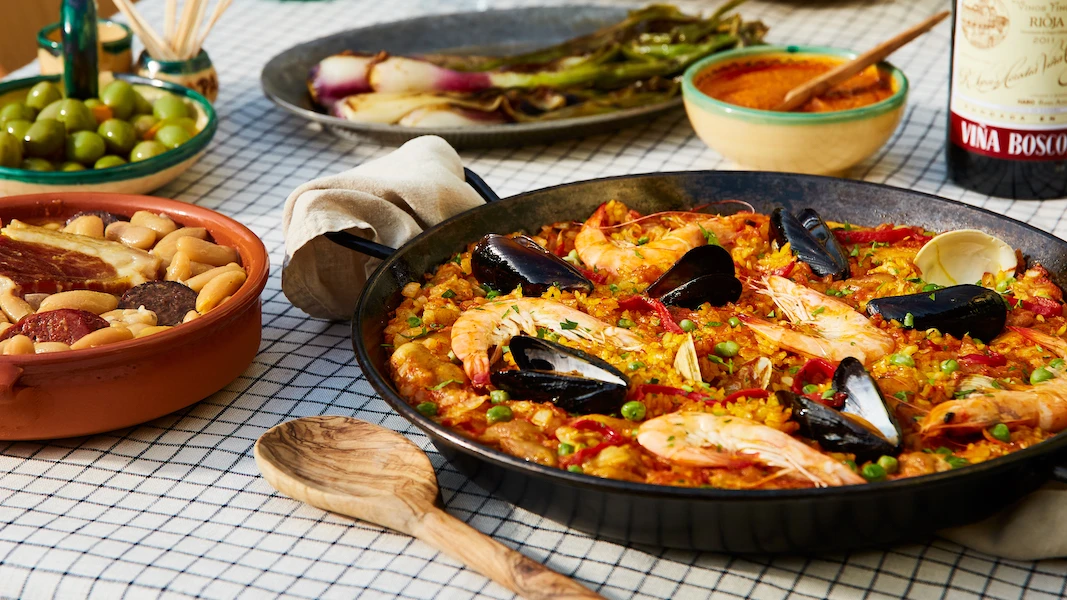Food Culture
Food cultures around the world are incredibly diverse and rich, reflecting the unique histories, traditions, and values of different societies. From the spicy and flavorful dishes of India to the hearty and comforting meals of Italy, each culture has its own distinct culinary identity. Food not only serves as nourishment for the body but also plays a significant role in social gatherings, celebrations, and rituals. Whether it's the communal feasting of a traditional African meal or the intricate tea ceremonies of Japan, food is a powerful symbol of cultural heritage and identity. Exploring food cultures allows us to appreciate the beauty of diversity and connect with others on a deeper level through the universal language of food.
Food holds immense importance within cultures as it serves as a powerful tool for expressing identity, heritage, and values. The way food is prepared, shared, and consumed can provide insights into a culture's history, traditions, and social norms. In many cultures, specific dishes or ingredients are deeply symbolic and hold special significance in religious ceremonies, festivals, and rituals. Food also plays a crucial role in social bonding, bringing people together to share meals, stories, and experiences. Additionally, the act of preparing and sharing food can foster a sense of community and belonging, strengthening interpersonal relationships and creating a shared sense of identity. Overall, food is a central aspect of cultural expression, connecting individuals to their roots and providing a tangible link to the past.
France

Frog Legs
One unique French food that stands out is "frogs' legs," known as "cuisses de grenouille" in French. This dish is a delicacy in French cuisine and is typically prepared by sautéing or frying the frog legs in butter, garlic, and parsley. Frogs' legs have a delicate flavor and tender texture, often likened to chicken or fish. While it may not be to everyone's taste, trying frogs' legs can be a memorable culinary experience for those looking to explore the diverse and adventurous side of French gastronomy.
Croissants
Croissants are a delicious pastry that originated in France. They are known for their flaky, buttery layers that melt in your mouth with each bite. The process of making croissants involves layering dough with butter, then folding and rolling it multiple times to create the signature airy texture. Whether enjoyed plain or filled with chocolate, almond paste, or ham and cheese, croissants are a versatile treat that can be enjoyed at any time of day. Their golden, crispy exterior and soft, fluffy interior make them a popular choice for breakfast or as a snack with a cup of coffee or tea. Overall, croissants are a beloved pastry that brings joy to many with their irresistible taste and texture.

Italy

Pizza
Pizza holds significant cultural and historical importance in Italy. It is considered a staple of Italian cuisine and is deeply ingrained in the country's culinary traditions. The origins of pizza can be traced back to Naples, where the iconic Neapolitan pizza was first created. Pizza has since become a symbol of Italian identity and is celebrated worldwide for its delicious flavors and versatility. In Italy, pizza is not just a food but a social experience, bringing people together to share a meal and enjoy each other's company. Its importance to Italy lies in its ability to showcase the country's rich culinary heritage and bring people together in a shared love for good food.
Pizza is a beloved dish that has captured the hearts and taste buds of people around the world. Originating in Naples, Italy, pizza is a culinary masterpiece known for its simple yet delicious combination of dough, tomato sauce, cheese, and various toppings. Whether it's the classic Margherita with fresh basil and mozzarella or a creative fusion of flavors like BBQ chicken or pineapple, pizza offers endless possibilities for customization to suit individual preferences. Beyond its gastronomic appeal, pizza holds a special place in popular culture, often associated with casual gatherings, movie nights, and celebrations. Its universal popularity transcends borders and cultural differences, making it a symbol of comfort, indulgence, and shared enjoyment. Whether enjoyed in a cozy pizzeria in Italy or delivered to your doorstep anywhere in the world, pizza continues to bring people together and delight taste buds with its irresistible combination of flavors and textures.
Pizza holds a special place in Italian culture as a beloved culinary icon that represents the country's rich gastronomic heritage. Originating in Naples, Italy, pizza has become synonymous with Italian cuisine worldwide. Its importance to Italy lies in its ability to showcase the country's culinary expertise, creativity, and passion for quality ingredients. Pizza is not just a dish in Italy but a cultural symbol that brings people together, whether it's enjoying a traditional Neapolitan pizza in a local pizzeria or experimenting with new toppings and flavors. The art of pizza-making has been passed down through generations, with each region in Italy adding its own unique twist to this classic dish. Ultimately, pizza embodies the spirit of Italian food culture, emphasizing the importance of tradition, community, and the joy of sharing a delicious meal with loved ones.
Spain
Paella
Paella is a traditional Spanish dish that originated in the Valencia region. It is a flavorful rice dish typically cooked in a wide, shallow pan and often includes a variety of ingredients such as saffron, vegetables, seafood, and meat. Paella is not only a delicious culinary creation but also a symbol of Spanish culture and heritage. It is often enjoyed during festive occasions and family gatherings, bringing people together to share a communal meal. The preparation and sharing of paella reflect the importance of food in Spanish culture, where meals are seen as a way to connect with others and celebrate the richness of the country's culinary traditions.
Paella holds significant cultural and culinary importance in Spain. Originating from the Valencia region, paella is a traditional Spanish dish that has become emblematic of the country's gastronomic heritage. The dish typically consists of rice, saffron, vegetables, and a variety of proteins such as chicken, rabbit, seafood, or a combination of these ingredients. Paella is not only a delicious and flavorful dish but also a symbol of Spanish identity and unity. It is often enjoyed during festive occasions, family gatherings, and celebrations, bringing people together to share a communal meal. The preparation and sharing of paella reflect the values of hospitality, conviviality, and tradition that are deeply ingrained in Spanish culture. Paella's importance to Spain lies in its ability to showcase the country's diverse culinary traditions, regional variations, and rich cultural heritage.

Germany

Sausages
Sausages are an integral part of German cuisine and culture, with a long history dating back to the Middle Ages. German sausages, or "wurst," come in a variety of types and flavors, each region having its own specialty. Some well-known German sausages include bratwurst, currywurst, weisswurst, and bockwurst. These sausages are typically made from a mixture of pork, beef, or veal, seasoned with spices like salt, pepper, and paprika. They are often grilled, fried, or boiled and served with mustard, sauerkraut, or bread. The tradition of sausage-making in Germany reflects the country's dedication to quality ingredients, craftsmanship, and culinary heritage.
Pretzel
Pretzels have a long history in German cuisine and are a beloved snack enjoyed by many. The origin of the pretzel can be traced back to Germany, where it was first created by monks in the early Middle Ages. Traditional German pretzels are known for their distinctive shape, which resembles a twisted knot or loop. They are typically made from a simple dough of flour, water, yeast, and salt, then boiled briefly in water before baking to achieve their characteristic chewy texture and golden-brown crust. Pretzels are often enjoyed with mustard or cheese and are a popular snack at beer gardens and festivals throughout Germany. The German pretzel has become a symbol of the country's culinary tradition and craftsmanship, with variations and regional specialties found across different parts of Germany.
